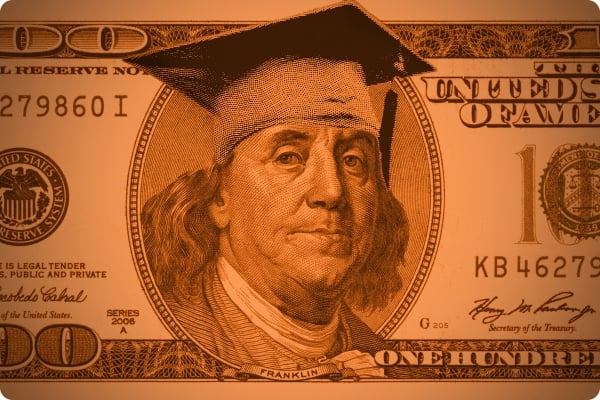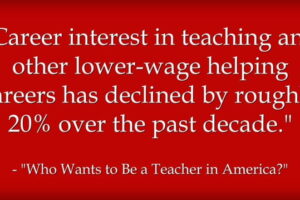
Report: Sticker Prices Inch Up
Full-time students at community colleges have been receiving enough grant aid to cover their tuition and fees since fall 2009.
Photo illustration by Justin Morrison/Inside Higher Ed | Rawpixel
College sticker prices rose slightly across all sectors for the 2025–26 academic year, according to the College Board’s Trends in College Pricing and Student Aid report, released Wednesday.
For the 2025–26 academic year, the average published price for tuition and fees at public four-year institutions for in-state students is $11,950, a 2.9 percent increase before inflation over 2024–25 prices. For out-of-state students, public four-year institutions are charging an average of $31,880, up 3.4 percent from 2024–25. Public two-year colleges charge in-district students an average of $4,150, up 2.7 percent from the previous year—though notably, full-time students at community colleges have been receiving enough grant aid to cover their tuition and fees since the 2009–10 academic year. The average published price at private four-year colleges is $45,000, up 4 percent from 2024–25.
Inflation-adjusted prices at public institutions have been on the decline for a while. Between the 2015–16 and 2025–26 academic years, the average inflation-adjusted tuition and fees at public four-year colleges fell 7 percent, and at public two-year institutions, the average fell 10 percent. At private nonprofit four-year colleges, average inflation-adjusted tuition and fees rose by 2 percent during the same ten-year timeframe.
Net prices are also down as average student aid packages rise. The average net tuition and fees paid by first-time, full-time students at private nonprofit four-year institutions declined from $19,810 (in 2025 dollars) in 2006–07 to $16,910 in 2025–26. At public four-year institutions, the average net price fell from a high of $4,450 in the 2012–13 academic year to $2,300 for the 2025–26 academic year.
When the maximum Pell grant award increased from $6,895 in 2022–23 to $7,395 in 2023–24, so too did the number of Pell Grant recipients. Between 2022–23 and 2024–25, the total number of Pell Grant recipients increased by 22 percent to 7.3 million, and total Pell Grant expenditures increased by 32 percent to $38.6 billion after adjusting for inflation.
Other notable findings include:
- Total annual student and parent borrowing is up slightly in 2024–25, to $102.6 billion, following a 38 percent decline between 2010–11 ($163.9 billion) and 2023–24 ($101.4 billion).
- Institutional grant aid for undergraduates increased by 22 percent between the 2014–15 and 2024–25 academic years.
- As of June 2025, 32 percent of borrowers owed less than $10,000 in federal loan debt. Another 21 percent of borrowers owed between $10,000 and $20,000 in federal loan debt. These groups held 4 percent and 8 percent of the total outstanding federal loan debt, respectively.

Source link


